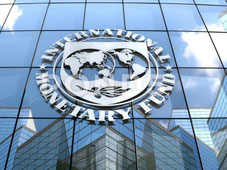
Economic growth forecast of Georgia
By Nika Gamtsemlidze
Monday, October 19
Due to the restrictions adopted to overcome the challenges related to the pandemic, the largest portion of the country’s economy was put on hold. As of today, experts are having a hard time forecasting the economic growth in the future. However, the forecast that most of the experts are talking about, is surprisingly positive.
Last week, the International Monetary Fund published a report on the future economic growth of many different countries around the world. According to the IMF, in 2021, the economy of Georgia will grow by 5%. As for 2021-2025, the economic growth of the country will be 5.5% on average. However, this forecast might change in the future.
As of 2020, the IMF says that Georgia’s economy will shrink by 5%. The forecast is the most positive for Georgia in the whole region. For Russia, the economic growth that is forecasted by IMF in 2021 is only 2.8, in Ukraine- 3%, for Azerbaijan- 2%, and Armenia- 3.5%.
The Finance Minister of Georgia Giorgi Kakauridze stated that in 2021, Georgia will experience a 5% economic growth even if the tourism sector in the country is not restored at all. “The 5% plan is based on realistic factors,” said Kakauridze, and added that if the tourism sector opens up in full force in 2021, the country has a chance of reaching as much as 7% economic growth. However, he also said that there are also some risks, including the ongoing economic process around the world.
According to the forecast of the World Bank, however, in 2021, Georgia will see only a 4% economic growth. State Audit Office representatives also stated that they are pessimistic about the 5% increase in 2021.
Economic growth is an increase in the production of economic goods and services, compared from one period of time to another. It can be measured in nominal or real (adjusted for inflation) terms. Economic growth means there is an increase in national output and national income and is usually defined by two main factors: An increase in aggregate demand (AD) and an increase in aggregate supply.


